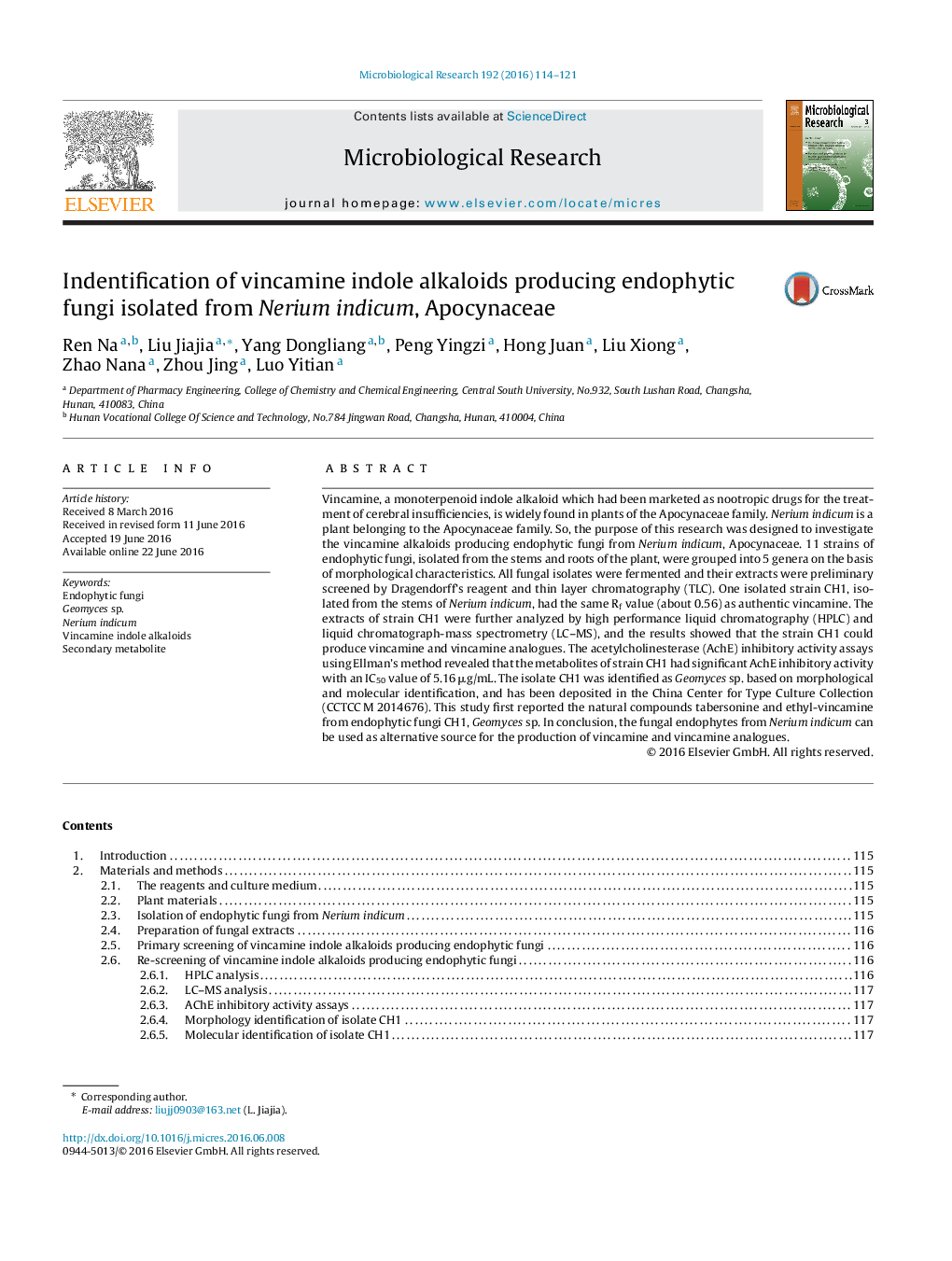| Article ID | Journal | Published Year | Pages | File Type |
|---|---|---|---|---|
| 2091861 | Microbiological Research | 2016 | 8 Pages |
Vincamine, a monoterpenoid indole alkaloid which had been marketed as nootropic drugs for the treatment of cerebral insufficiencies, is widely found in plants of the Apocynaceae family. Nerium indicum is a plant belonging to the Apocynaceae family. So, the purpose of this research was designed to investigate the vincamine alkaloids producing endophytic fungi from Nerium indicum, Apocynaceae. 11 strains of endophytic fungi, isolated from the stems and roots of the plant, were grouped into 5 genera on the basis of morphological characteristics. All fungal isolates were fermented and their extracts were preliminary screened by Dragendorff’s reagent and thin layer chromatography (TLC). One isolated strain CH1, isolated from the stems of Nerium indicum, had the same Rf value (about 0.56) as authentic vincamine. The extracts of strain CH1 were further analyzed by high performance liquid chromatography (HPLC) and liquid chromatograph-mass spectrometry (LC–MS), and the results showed that the strain CH1 could produce vincamine and vincamine analogues. The acetylcholinesterase (AchE) inhibitory activity assays using Ellman’s method revealed that the metabolites of strain CH1 had significant AchE inhibitory activity with an IC50 value of 5.16 μg/mL. The isolate CH1 was identified as Geomyces sp. based on morphological and molecular identification, and has been deposited in the China Center for Type Culture Collection (CCTCC M 2014676). This study first reported the natural compounds tabersonine and ethyl-vincamine from endophytic fungi CH1, Geomyces sp. In conclusion, the fungal endophytes from Nerium indicum can be used as alternative source for the production of vincamine and vincamine analogues.
